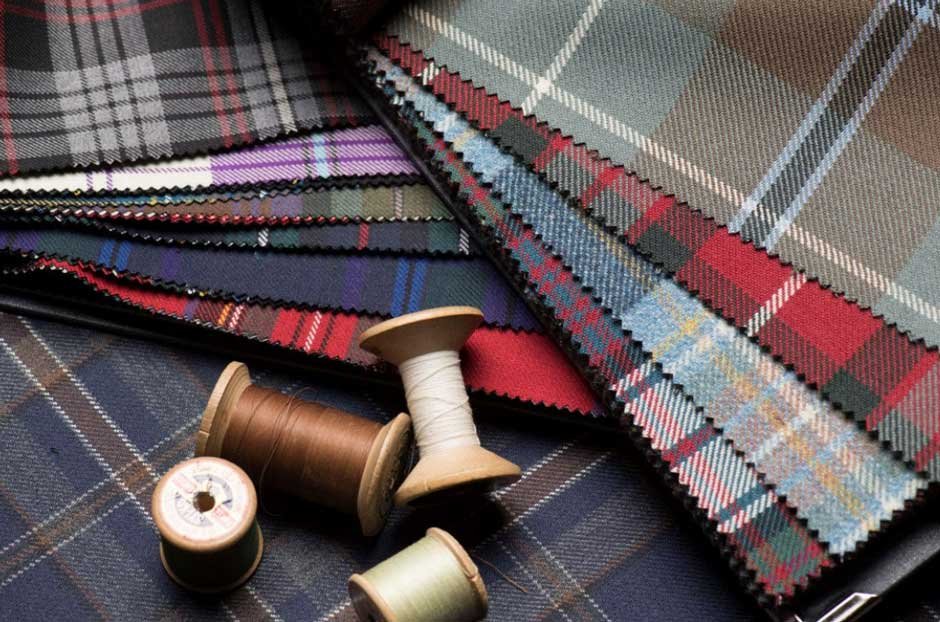Tartan. The word alone evokes imagery of misty Scottish Highlands, kilted warriors, and the sound of bagpipes echoing through the glens. For centuries, tartan has been synonymous with Scottish heritage, clan identity, and national pride. But while its roots are undoubtedly Scottish, tartan’s branches now reach across continents, cultures, and generations. From high fashion runways in Paris to punk stages in London and Tokyo streetwear scenes, tartan has become more than just a traditional fabric—it’s a global symbol.
So, is tartan only for Scots? Or has this age-old pattern found a place in wardrobes and cultures far beyond its origins? Let’s unravel the journey of tartan, exploring how it evolved from a Highland hallmark to a worldwide fashion staple—and how brands like Scottish Kilt, which offers clothing in over 5,000 tartans, are keeping this tradition both authentic and accessible for a global audience.
The Roots of Tartan – A Highland Legacy
Tartan’s history is deeply interwoven with Scotland’s story. While woven check patterns have appeared in various cultures throughout history, it was in the Scottish Highlands that tartan developed into a sophisticated system of identity. By the 16th century, tartan was more than fabric—it was a declaration of allegiance, geography, and family ties.
Each clan or region began adopting specific tartan patterns, known as setts, distinguished by color combinations and stripe arrangements. These sets were passed down and worn with pride, primarily in kilts and plaids. A Highlander could be identified by his tartan just as easily as by his name.
But tartan was also political. Following the Jacobite uprisings, the British Crown viewed Highland culture, including tartan, as a threat. The Dress Act of 1746 banned the wearing of tartan in much of Scotland, criminalizing a garment that symbolized rebellion and Scottish nationalism.
Ironically, this suppression sparked greater interest in tartan, especially among the British elite. By the early 19th century, tartan had made a comeback—this time as a romanticized image of Scotland, thanks in part to writers like Sir Walter Scott and royal patrons like Queen Victoria and Prince Albert.
Royal Influence & Reinvention
Queen Victoria’s fascination with Scotland led to tartan becoming a fashionable symbol of regal admiration. She and Prince Albert decorated Balmoral Castle with tartan, commissioned their own royal Balmoral sett, and encouraged the use of Highland dress in public ceremonies.
Suddenly, tartan wasn’t just for Highlanders. It was for royalty, aristocrats, and tourists who wished to play Scottish for a day. The pattern, once feared by the Crown, became endorsed by it, helping tartan transition from regional heritage to national and international fashion.
This shift paved the way for tartan’s use beyond traditional clan affiliations. New tartans were designed for events, military regiments, universities, and even corporations. The stage was set for tartan to travel far beyond Scotland.
Tartan Around the World – A Global Fabric Emerges
Colonial Echoes & Military Influence
During the height of the British Empire, Scottish soldiers wore tartan kilts into battle and ceremonial parades across colonial territories. Tartan-clad regiments were stationed in Canada, India, Africa, and Australia, introducing the fabric to new audiences. Locals began associating tartan with honor, discipline, and Scottish bravery.
In Canada and New Zealand, Scottish settlers brought tartan traditions with them. Highland games, pipe bands, and clan gatherings kept the culture alive. Canadian provinces even developed their official tartans, such as the Quebec and Nova Scotia tartans—evidence of how deeply tartan was absorbed into new national identities.
Tartan in America – A Symbol of Heritage and Rebellion
In the United States, millions of people claim Scottish ancestry. From New York to North Carolina, Scottish festivals celebrate tartan as both a cultural relic and a family emblem. The U.S. even has a National Tartan Day, observed on April 6th, celebrating the contributions of Scottish Americans.
Yet tartan in the U.S. evolved beyond heritage. In the 20th century, tartan was reimagined through the lens of counterculture and rebellion, none more powerfully than in punk fashion.
Tartan Goes Punk – Rebellion in a Pattern
In the 1970s, tartan found a radical new audience: the punk movement. Fashion designer Vivienne Westwood and her partner Malcolm McLaren turned tartan into a rebellious statement. No longer just the attire of noble Highlanders or sentimental tourists, tartan was now ripped, safety-pinned, and spiked—a symbol of anti-establishment defiance. Tartan represented something ironic, a jab at the British elite and monarchy. It had become fashion’s political weapon.
The punk influence would echo across decades and continents, particularly in youth subcultures that rejected conformity and embraced bold expression.
Tartan in Japanese Streetwear – Global Cool
From the underground clubs of Tokyo to the Harajuku fashion scene, tartan quickly found favor in Japan. Japanese designers admired its layered history and complex symbolism. Mixed with futuristic cuts or traditional silhouettes, tartan became a favorite in Japanese streetwear.
Designers like Jun Takahashi (Undercover) and Comme des Garçons have frequently used tartan in avant-garde collections. It has become synonymous with nonconformity and individuality, not far off from its punk interpretation, yet deeply respectful of its cultural roots.
In Japan, tartan also intersects with the concept of “Wabi-Sabi”—finding beauty in imperfection and transience. A well-worn tartan scarf or deconstructed kilt holds both fashion value and emotional weight.
Tartan on the Runway – From Rebels to Royals Again
The fabric’s dual nature—traditional yet edgy—has made tartan a favorite of haute couture and ready-to-wear designers. Fashion houses like Alexander McQueen, Burberry, and Dior have continually revisited tartan as part of their aesthetic.
McQueen, in particular, channeled his Scottish heritage into dramatic tartan-infused pieces. His 1995 “Highland Rape” collection stirred controversy but also brought global attention back to Scotland’s fraught relationship with England and its heritage.
Meanwhile, Burberry’s signature check, though technically a tartan, became a global brand symbol—eventually so recognizable it was both revered and parodied.
Tartan in Everyday Fashion – A Cultural Chameleon
Today, tartan appears in everything from school uniforms and scarves to sneakers and mobile phone covers. It has been adopted across various subcultures—grunge, goth, hip-hop, and prep—and continues to evolve. Fashion brands around the world use tartan not merely for its aesthetic appeal, but because of the emotional connection it offers. Wearing tartan can signify heritage, rebellion, sophistication, or street cred—depending entirely on how it’s styled.
And thanks to digital customization and global shipping, tartan is more accessible than ever—enter the Scottish Kilt.
Scottish Kilt – 5,000+ Tartans for the World to Wear
As tartan crosses borders, brands like Scottish Kilt play a vital role in preserving its authenticity while expanding its reach. With a collection that includes over 5,000 tartans, Scottish Kilt empowers individuals around the globe to connect with their heritage or create a new story through fabric.
Whether you’re looking for a clan-specific tartan, a universal sett, or a modern reinterpretation in utility kilts, jackets, or accessories, Scottish Kilt ensures that the tradition remains meaningful and wearable. They offer customizable tartan products, from traditional kilts and kilts for women to modern tartan jackets, scarves, and trousers, allowing customers to honor the past while stepping confidently into the future.
Their commitment to craftsmanship, fabric authenticity, and cultural respect makes Scottish Kilt not just a clothing brand, but a global ambassador of tartan heritage.
Appreciation or Appropriation? Navigating Cultural Respect
With tartan’s widespread popularity, it’s natural to ask: is wearing tartan outside of Scottish culture respectful or appropriative?
Unlike certain sacred indigenous patterns or regalia, tartan is
not a closed cultural item. Many tartans are designed to be universal or represent cities, schools, and even global events. New tartans are registered all the time—some are for fashion brands, others for communities or personal celebrations.
What matters is intent and respect. Wearing tartan as a tribute to heritage, or as a fashion choice informed by its history, is generally embraced. Brands like Scottish Kilt help educate wearers about their tartans’ meanings, ensuring that cultural understanding goes hand-in-hand with visual appeal.
The Future of Tartan – Reimagining an Icon
Tartan’s journey is far from over. As sustainability becomes central in fashion, wool-based tartan—a natural, renewable material—gains more relevance. As personalization becomes a trend, tartan offers infinite combinations of colors and meanings. As digital design evolves, we may see tech-infused tartans, 3D-woven patterns, or AR-enhanced garments that tell stories through color and motion.
From ancestry DNA kits to smart textiles, tartan is well-positioned to thrive in both heritage and innovation. And with brands like Scottish Kilt making it accessible and customizable worldwide, tartan is no longer just a Scottish treasure—it’s a global fabric with a personal touch.
Conclusion – Tartan Belongs to the World—But Never Forgets Its Roots
So, is tartan only for Scots?
The answer is no, but that doesn’t mean it has lost its Scottish soul. Tartan’s beauty lies in its versatility: it can be solemn or bold, rebellious or royal, ancient or futuristic. It can belong to a clan or a city, a fashion designer or a family heirloom. What remains constant is the story each tartan tells—woven in color, tradition, and identity.
As the world continues to celebrate diversity and heritage, tartan serves as a living thread that connects people across borders. Whether you wear it to honor your Scottish ancestors, express your fashion sense, or simply because you love the pattern, remember: you are part of a story centuries in the making.







